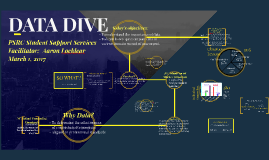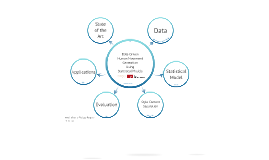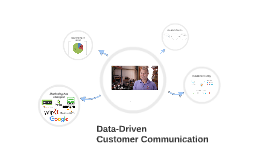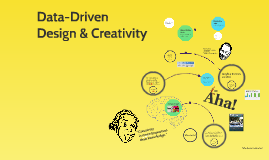Data- Driven
Transcript: Best-Practices in Collecting Data Informed Consent Confidentiality Frequency of Collection Volume Needed Source of Data Limitations Dissemination of Findings Avoid Over-Generalizing Degrading Empty Promises Dunning and Kruger – “Unskilled and Unaware of It” Findings Across 4 Studies: Knowns – There are things we know about quality treatment (Family Systemic Involvement) Known Unknowns – There are things we know we don’t know about quality treatment (Sensory Checklist: Sensory-Informed Interventions) Unknown Unknowns – There are things that are unknown unknowns; things we don’t know that we don’t know about quality treatment Mediocre Doctor is not aware of the diagnostic possibility or treatments never considered Run-Of-The-Mill Lawyer fails to recognize the winning legal argument that is out there People fail to reach their potential as professionals, lovers, parents and people simply because thy are not aware of the possible. Dunning: “ So, yes, the idea resonates. I would write more, and there’s probably a lot more to write about, but I haven’t a clue what that all is” Organizational Social Context (OSC) Organizational Social Context (OSC) Thank You! Pragmatic tracker Outcometools.com OQ Analyst Myoutcomes.com Fit-outcomes.com DBT Diary card –Tracker app mFIT mobile app System norms and values “The way things are done” What is expected and rewarded Data-Driven Treatment Measure Examples Practice based evidence is essential for our field. We will focus on the use of a program’s own outcomes studies in driving treatment decision making. Outcomes / Feedback informs treatment, and informed treatment produces improved outcomes. Contextual model Fit bit ( Health and wellness) Lume (I phone mood tracker) Jawbone UP -( steps taken, calories burned, eating habits, sleep quality and sleep cycle vibration alarm; behavioral nudges (water consumption, movement, sleep) Wake mate (sleep specific) Nike+ Fuelband ( Steps, calories burned) Utilization of measures - opportunities and stumbling blocks for data collection What are the barriers for data collection in your program? Create an action plan for overcoming. One study found those who lost more then 60 pounds and maintained the weight loss for more then five years weighed themselves daily (Klem et al, 1997) More and more we are finding ways to quantify our lives by measuring more then weight. Organizational Readiness for Change Examples Three main purposes for data collection in your program Types of assessment measures that are best fit for your program Action plan for beginning to collect data Proper utilization and dissemination of findings Climate Perceptions of work environment’s psychological impact on employees Affective response “Is this place good or bad for me” Rejection or adoption of new technologies It can predict sustainability and success of EBP implementation Assimilation vs. Accommodation Information fitting versus developing fields Positive or negative outcomes: Turnover, organizational commitment, staff wellbeing, client wellbeing, EBP success, quality of care Individual persistence vs. apathy/resistance Feelings of autonomy, decision control, energy, motivation, tenacity Data-Driven Treatment Data- Driven Treatment 1. Proficiency – expectation that service providers will be competent, have up-to-date knowledge, and place the well-being of clients first 2. Rigidity – expectation that service providers will have limited discretion and flexibility, and closely follow extensive bureaucratic rules and regulations 3. Resistance – expectation that service providers will show no interest in change or new ways of providing services Feedback Informed Treatment Dunning and Kruger – “Unskilled and Unaware of It” Findings Across 4 Studies: Participants scoring in the bottom quartile on tests of humor, grammar, and logic grossly overestimated their test performance and ability. Although their test scores put them in the 12th percentile, they estimated themselves to be in the 62nd” “Put simply, people tend to do what they know and fail to do that which they have no conception of. In that way, ignorance profoundly channels the course we take in life.” See Justin Kruger and David Dunning, “Unskilled and Unaware of It: How Difficulties in Recognizing One’s Own Incompetence Lead to Inflated Self-Assessments,” Journal of Personality and Social Psychology, Dec. 1999, 1121–34) Client Questionnaires (eg. YOQ, RADS, ORS, SRS) http://www.screencast.com/t/y4ALQWNsc5u Organizational Questionnaires / Measures (eg. OSC) (incident reporting, Staff turnover) Organizational Trackers (eg. Salesforce, ) Feedback forms (Staff, Students, Families, Referral partners) Employee training and level advancement Prioritizing Items to be Assessed: What is the potential utilization of outcomes data in your program? Marketing Screening Treatment Planning Projecting Training Risk Assessments More? Examine current areas of a programs strength and weakness Program “fit” for incoming clients

















